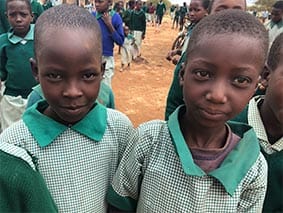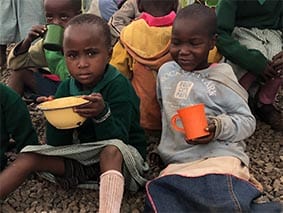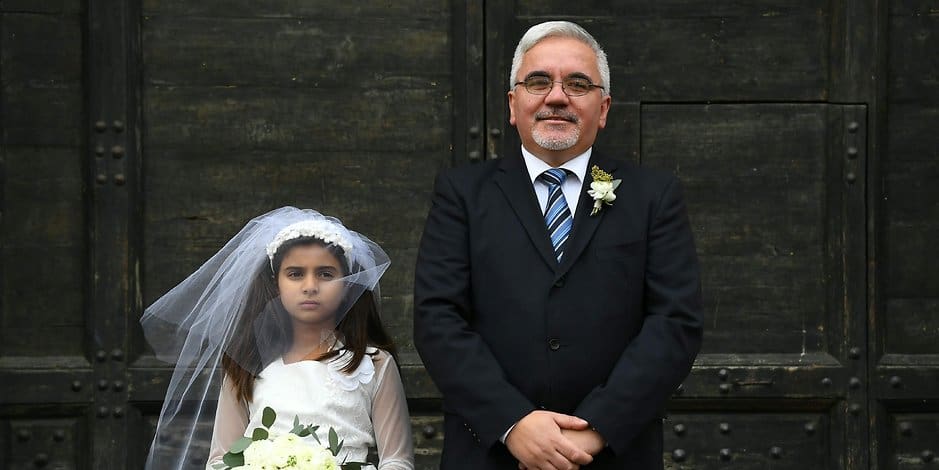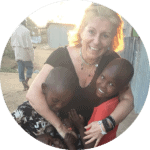World Marriage Day is celebrated on February 10, 2019. The aim of this day is to celebrate marriage as the foundation of family and society. The day is also intended to honor values such as fidelity and sacrifice and the joy of daily married life.
But how do minors perceive their married life and what impact does it have on the lives of married minors – in most cases girls? What impact does the marriage of minors have on a society?
Child marriage refers to marriages between an adult, usually male, spouse and a girl of child age. Due to the lack of a binding international definition of child marriage, the definition of the UN Convention on the Rights of the Child is often used, which defines child marriage as a marriage in which at least one of the partners has not yet reached the age of 18.
According to UNICEF, 12 million girls are married off early every year – with dramatic consequences:
These girls lose their fundamental rights to protection, health, education, play and recreation.
As soon as girls become wives, their childhood is over. Sex, motherhood and responsibility for the household now dominate their lives.
In addition, complications during pregnancy and childbirth pose a major risk for this age group, as their bodies are not yet sufficiently developed to cope with the stresses of pregnancy and childbirth.
The risk of dying in childbirth is twice as high for girls aged between 15 and 19 as for women in their 20s. For girls between the ages of 10 and 14, the risk is even five times higher.
Every year, 50,000 girls worldwide die in childbirth or pregnancy. In addition, the risk of a child being stillborn or dying in the first week of life is 50% higher for mothers aged between 15 and 19 than for mothers aged between 20 and 29.
It is also striking that the 20 countries with the highest rate of child marriage are also countries with an extremely low per capita gross domestic product. This also suggests that child marriages have a negative impact on the development of societies.
20 countries with the highest rate of child marriage *
| Country | Number of child marriages in % | GDP per capita ** |
| Niger | 76% | $1’200 |
| Central Afr. Rep. | 68% | $700 |
| Chad | 68% | $2’300 |
| Mali | 55% | $2’200 |
| Bangladesh | 52% | $4’200 |
| Burkina Faso | 52% | $1’900 |
| Guinea | 52% | $2’200 |
| South Sudan | 52% | $1’600 |
| Mozambique | 48% | $1’300 |
| India | 47% | $7’200 |
| Malawi | 46% | $1’200 |
| Somalia | 45% | NA |
| Nigeria | 43% | $5’900 |
| Eritrea | 41% | $1’600 |
| Ethiopia | 41% | $2’200 |
| Madagascar | 41% | $1’600 |
| Nicaragua | 41% | $5’900 |
| Uganda | 40% | $2’400 |
| Sierra Leone | 39% | $1’600 |
| Cameroon | 38% | $3’700 |
*Percentage of women aged between 20 and 24 who were married before the age of 18.
** 2017 estimate
*** Growth in 2017 compared to the previous year
Source: UNICEF, State of the World’s Children, 2016; Based on cluster analyses with several indicators, demographic and health reports and other national reports and refers to the most recent reports from 2008 – 2014; CIA Factbook, www.cia.gov
In a press release dated March 6, 2018, UNICEF speaks of a global decline in the prevalence of child marriages by 15 percent over the last ten years. However, more than 150 million girls worldwide are still at risk. The abolition of child marriage is one of the Global Development Goals for 2030, which means that progress must be significantly accelerated.
As Anju Malhotra, the UNICEF gender expert, says: “Every child marriage that is prevented gives another girl the chance to fulfill her potential.
Child marriage is a human rights violation!
The organization girlsnotbrides.org estimates that in Kenya, 4% of all girls are married before their 15th birthday and 23% of all girls are married before their 18th birthday. The UNICEF study “State of the World’s Children, 2016” puts the number of Kenyan girls married before their 18th birthday at 482,000! Girls in rural areas are affected twice as often as girls in urban areas.
That’s why we want to help the girls in Iloshion!




They should be spared the fate of child marriage and we want to give them the opportunity to complete their school education. That is why we started building the Nasaru Learning Center for Maasai girls in 2018.
This learning center is nearing completion and offers space for 72 girls. We are now planning to build a vegetable garden so that the girls can gain additional qualifications and also learn how to feed themselves and their future families more healthily. A chicken coop will complete the learning center. Eggs and chickens are not only a nutritious and healthy addition to the meagre diet, but also a potential future source of income.
We still need donations for the expansion of the Nasaru Learning Center for Maasai girls with a vegetable garden and a chicken coop! Every donation counts – no matter how big or small!
THANK YOU!
Source: Cover and featured image
A young actress plays a 10-year-old girl who is married off to a much older man. The photo was taken as part of an “Amnesty International” campaign against child marriages
Photo: AFP



